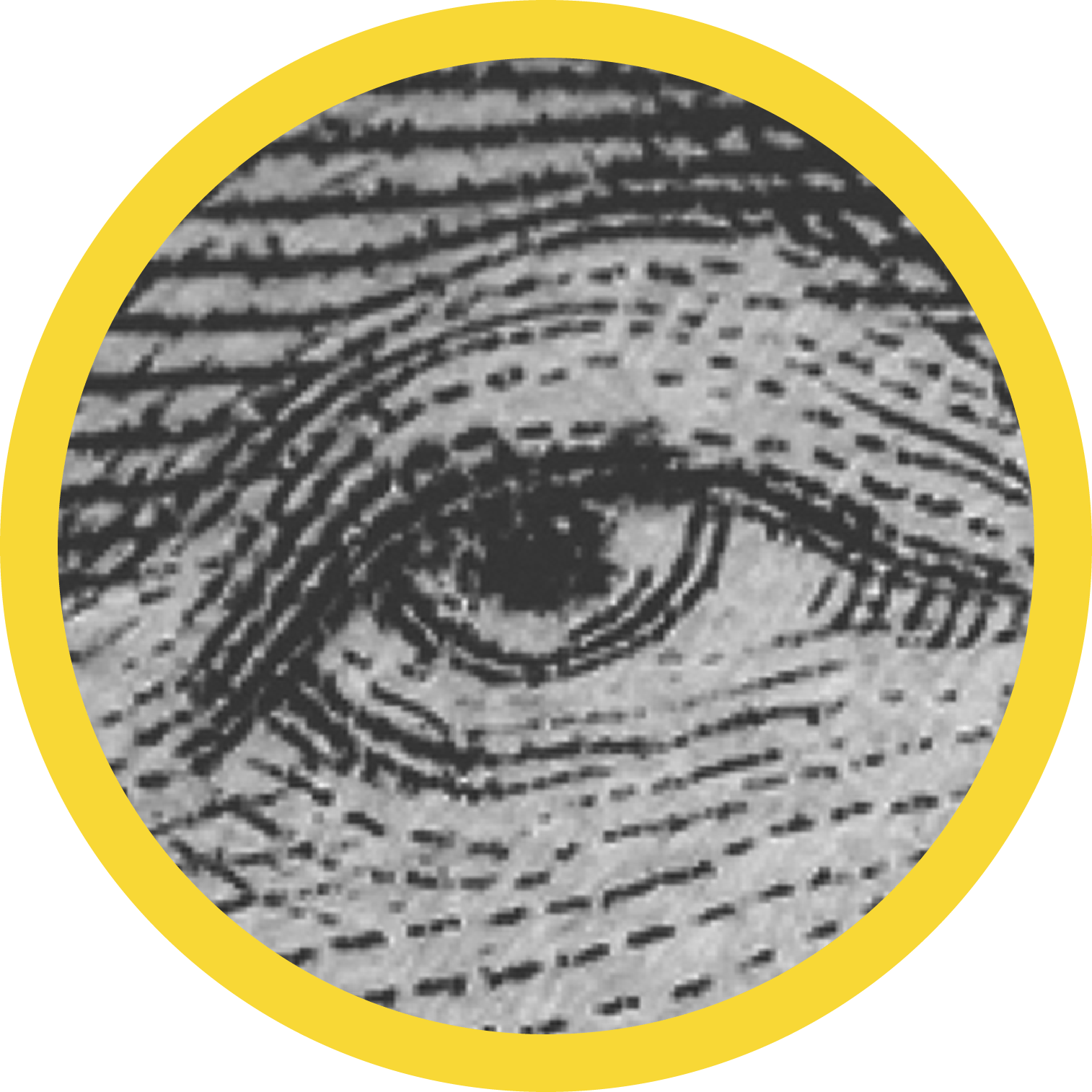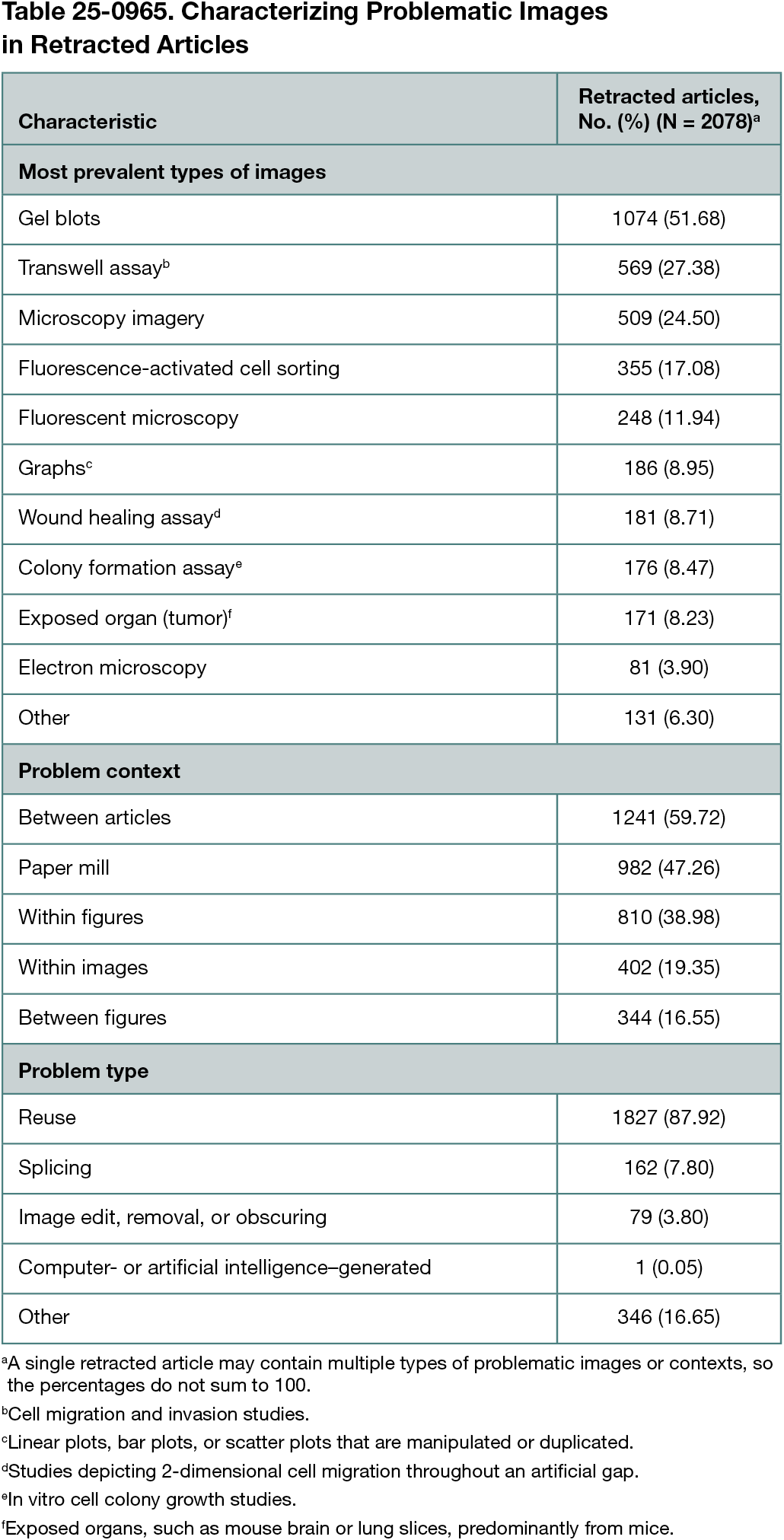Abstract
Characterizing Problematic Images in Retracted Scientific Articles
João Phillipe Cardenuto,1 Daniel Moreira,2 Anderson Rocha1
Objective
To quantitatively analyze the types, contexts, and manipulation methods of problematic images that lead to retractions of scientific articles.
Design
This cross-sectional study analyzed retracted articles flagged for problematic image manipulation (eg, image duplication) in the Retraction Watch Database1 (56,716 entries as of October 4, 2024). We focused on entries containing the term image in the retraction reason (8002 entries) and further refined the dataset to those discussed on PubPeer2 (2078 after duplicate removal) to gain more detailed insights into the image problems. Data extracted included figure types (eg, microscopy, gel blot), the context of image misuse (eg, within-article, between-article), and the type of manipulation (eg, duplication, splicing).
Results
The Table presents our results (Table 25-0965). Gel blots (eg, Western blots) were the most frequently cited image type in problematic retractions, appearing in 1074 articles (51.68%). Between-article image reuse, where an image and its associated data are duplicated across different publications, was the most common context of misuse, identified in 1241 cases (59.72%). Notably, 982 retractions (47.28%) were attributed to paper mills. Image duplication was the predominant cause of retraction, accounting for 1827 cases (87.92%). Only 1 retraction was attributed to computer- or artificial intelligence–generated manipulation. While our analysis did not filter by the biomedical area, most problematic images originated from the biomedical domain.
Conclusions
This study highlights the prevalence of gel blot images and between-article image duplication in retracted articles, indicating a potential benefit from specialized tools to detect such issues. During our analysis, we noticed a frequent lack of detailed and standardized information in retraction notices, which hinders efforts to understand and prevent the presented problems. While PubPeer data offer valuable insights when the retraction notices fail to do so, PubPeer posts are not official documents and may exhibit biases from their authors, which could result in speculative claims about an article. Because of that, to facilitate research and improve the integrity of the scientific record, future research should focus on discussing and developing better guidelines for comprehensive retraction notices that may even support computer-aided solutions.
References
1. The Retraction Watch Database. Accessed January 31, 2025. http://retractiondatabase.org/
2. PubPeer. Accessed January 31, 2025. https://pubpeer.com
1Artificial Intelligence Lab, Recod.ai, Institute of Computing, Universidade Estadual de Campinas, Campinas, São Paulo, Brazil, phillipe.cardenuto@ic.unicamp.br;
2Department of Computer Science, Loyola University Chicago, Chicago, IL, US.
Conflict of Interest Disclosures
None reported.
Funding/Support
This study was supported by the National Council for Scientific and Technological Development–CNPq (grant No. 442229/2024-0) and by the São Paulo Research Foundation–FAPESP (grant No. 2023/12865-8).
Role of the Funder/Sponsor
The funder had no role in the design and conduct of the study; collection, management, analysis, and interpretation of the data; or preparation, review, or approval of the abstract.

